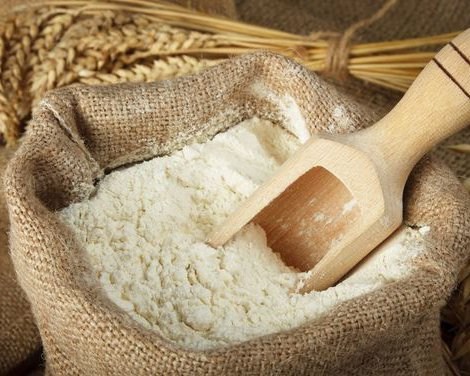Fantastic alternative: 14 options to replace wheat flour.


If you have gastrointestinal problems or are interested in healthy eating, these alternative flour options are for you.
They are suitable for use in any recipe, reports Readers Digest.
Alternatives to wheat and gluten-free flour
Millet is a very ancient and drought-resistant grain widely grown in China, India, and Africa. Millet has a protein structure similar to wheat, making it a fantastic alternative. It has a sweet taste, similar to cornmeal. In addition to being gluten-free, it contains many beneficial substances, such as iron, dietary fiber, B vitamins, copper, manganese, magnesium, potassium, phosphorus, and zinc. The distinctive feature of millet from wheat is its ability to be stored at room temperature for a long Time.
While millet can be a direct substitute for wheat, it is recommended to combine it with other gluten-free flours.
Sorghum flour
This flour is similar to millet and is made from sorghum grain, which is widely used in Africa and India for making porridge, flatbreads, and unleavened bread. It has a light sweet taste, making it ideal for those looking for a sweet-tasting alternative. Sorghum flour is rich in antioxidants, iron, dietary fiber, B vitamins, copper, manganese, magnesium, potassium, phosphorus, and zinc.
Arrowroot flour
Arrowroot flour is made from the root of the arrowroot plant. It is tasteless and odorless and is used as a thickener for sauces, soups, and other products such as jelly and fruit fillings. This flour can thicken products twice as much as wheat flour. It is excellent for making cranberry sauces, sweet and sour sauces, etc. It can also be used to make homemade ice cream as it is resistant to low temperatures. Arrowroot flour is rich in B vitamins, iron, and potassium, but does not contain protein, which adds the ability to thicken other food products.
Coconut flour
This flour is made from dried coconut meat. It contains plenty of protein, fiber, and fats, with a light coconut flavor. These components make the flour very rich. The flour is gluten and wheat-free, so it can be used for making cakes, cookies, bread, and muffins. Its high absorbent capacity means that if used alone, the baked goods will be dry and dense. To avoid this, you need to add more eggs and extra fat or liquid to achieve the perfect texture.
Almond flour
This flour is made from ground dried almonds. It is an excellent source of healthy fats and proteins. The flour is high in calories. It can be used for baking, raw desserts, and bread. To replace a cup of all-purpose flour, mix 3/4 cup almond flour and 1/4 cup arrowroot flour to enhance the flavor.
Amaranth flour
This flour is made from the seeds of the amaranth plant, which is a leafy vegetable. Amaranth flour is very rich in protein. It is also a source of calcium, iron, magnesium, and phosphorus. It has a dense grain with an earthy flavor, so it needs to be used in a one-to-one ratio with other types of flour (for example, mix 1/2 cup amaranth and 1/2 cup almond flour if the recipe calls for 1 cup of regular flour).
Cassava flour
This flour is made from the root of the cassava plant. It gives baked goods sweetness and stickiness. It can also be used as a thickener. However, the flour absorbs a lot of moisture, so use less flour to avoid dryness in baked goods. It stores well at room temperature.
Brown rice flour
This flour is made from unpolished brown rice. It has higher nutritional value than white rice as it contains brown rice bran, which is rich in fiber. The flour has a grainy texture and is well-suited for making cakes, cookies, and bread.
When using brown rice flour, remember that it absorbs more moisture than all-purpose flour. Therefore, it is important to add liquid or more eggs to ensure delicious baked goods. In baking with this flour, it is better to avoid adding leavening agents.
READ ALSO: For lunch and dinner: how to cook lazy khachapuri on the stove
Potato flour
This flour has a pronounced potato flavor and is quite heavy. For this reason, it should be used with caution in recipes. Additionally, it spoils quickly, so buy it only before use. It is also often used as a thickener for sauces, gravies, and soups.
Banana flour
This flour is made from unripe green bananas that are dried and ground. It has a bran-like instead of a banana flavor. Banana flour is used for making soups, sauces, and baked goods.
Buckwheat
Read also
- What Things Will Age Your Look - They Are No Longer Relevant
- How long to wear a pedicure without harming your nails — the exact term
- The Trendiest Manicure of July - You Will Definitely Be Surprised
- Hairstyle that Makes You Look Younger and Adds Volume to Hair After 45
- Young mom in trend - stylish summer looks from Hanna Koshmal
- Dress that saves from the heat and captivates at first sight









